Here you will find a list of wonderful monuments in Ireland - each has its own particular symbolism in relation to Ireland’s rich and varied history or historical figure(s).
The Spire, Dublin 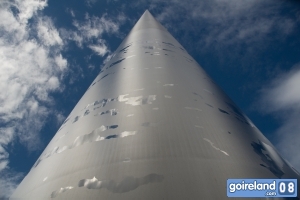
The Spire in Dublin points skyward over the historic Irish capital like an enormous needle. It was built at a cost of four million euro and is the focal point of a project aimed at rejuvenating the O’Connell Street district, Dublin’s traditional shopping and cultural hub.
Officially titled The Spire, though another consideration was The Brian Boru Spire, the monument has gained plenty of more colourful names by locals. Some of the cleaner examples include ‘The Spike’, ‘The Spire in the Mire’, ‘The Stiletto in the Ghetto’, ‘The Eyeful Tower’, ‘The Nail in the Pale’, and ‘The Pin in the Bin’. The name in Irish is ‘An Tur Solais’ which translates as The Spire of Light in English
The monument was designed by Ian Ritchie Architects of London, which won a competition to replace Nelson’s Pillar, which was a 19th century memorial to the British Admiral, but was destroyed in 1966 by the IRA. There were 130 tonnes of hot roll stainless steel to create the Spire. The Spire tapers from a 3-metre diameter at the base just 15 centimetres in diameter at the tip that houses a powerful light.
Mitchelstown Caves 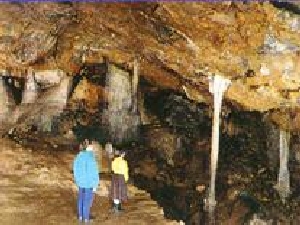
The famous caves can be found 12km south of Mitchelstown and are actually located in County Tipperary! As the caves are open year round for guided tours, they are very popular among tourists.
Discovered by a local farmer back in 1833, the Earl of Kingston soon claimed them to be his as they were found on his land. What was discovered is a prehistoric cave of great beauty and scientific interest.
The stalagmites to be found in Mitchelstown cave are very impressive. It takes a thousand years to grow stalagmites of a few centimetres but the formations found in this cave are much longer than average suggesting the caves are very old!
Why not take a tour of the caves? The tours are approximately 3 kilometres in length and go through several caves with examples of different types of formations - many of which are given colourful names! Its very educational!
Father Matthew Statue 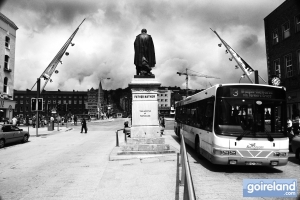
Standing in the centre of Patrick Street, this statue commemorates Fr. Thoebold Matthew, the apostle of Temperance(1790 - 1861), He was known and loved in Cork for his efforts to alleviate distress during the cholera epidemic of 1832 and during the Great Famine from 1845 to1850. He was also responsible for the purchase of the botanic gardens in Ballyphehane and the establishment of St Joseph’s cemetery on that site.
The statue of Fr. Matthew was erected on 10 October 2024 and it has been loved and adore by Corkonians ever since.
Alcock and Brown, Clifden 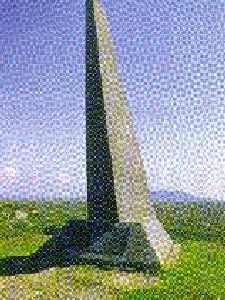
Alcock & Brown Memorial; Close to the ruins of the Marconi Radio Station is the spot where Alcock and Brown landed in Derrygimlagh Bog, at the end of the historic first non-stop trains-Atlantic flight in June 1919. A cairn has been erected nearby and on higher ground about 2.5Km away, a 4m limestone monument in the shape of an aeroplane has been erected to mark the historic achievement.
Liam Mellowes Statue, Galway 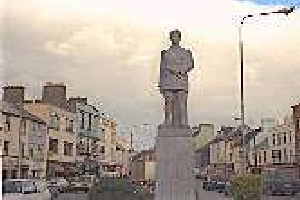
A reminder of another war, culminating in the Fight for Independence can be seen at Eyre Square. In a circular island stands a statue by Donal Murphy of Liam Mellowes, the patriot who led one of the few military engagements outside Dublin during the Easter Rising of 1916. The Liam Mellowes GAA Club, founded in 1934, is named in the the honour and memory of a great Irish patriot.
General Post Office (GPO) 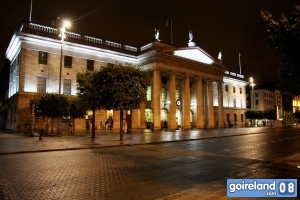
The portico of the General Post Office (GPO), built by Francis Johnston in 1815-1818, dominates the profile of O’Connell Street. The three stone figures by Edward Smyth above the pediment represent Mercury, Hibernia and Fidelity.
This was the main stronghold of the Irish Volunteers in 1916 Easter Rising. During the battle the building was set alight and was then abandoned after the surrender by the rebellion leaders, who were then executed in Kilmainham Gaol. The bullet marks from this battle can still be seen in the front pillars today.
The Post Office was reopened in 1929. In 2003 the GPO was joined by the Spire which was placed on the spot that Nelsons Column had occupied. Nowadays the General Post Office offers a wide range of services.
James Joyce Monument 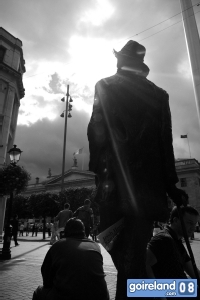
More has been written about James Joyce than about Shakespeare.
The eldest son of a spendthrift who brought his large family from prosperity to poverty without relinquishing his standards, Joyce was educated by the Jesuits at Clongowes Wood College, one of the finest private schools in the country, until the money ran out.
He was then offered a free place at Belvedere College in the centre of Dublin to continue his secondary education. Precocious in many respects, he had his first sexual experiences with prostitutes at the age of fourteen.
He entered University College in 1898, having lost his Catholic faith and determined to devote his life to his art. Other students, and his lecturers, were amazed by the extent of his reading. At the age of eighteen he had a piece on Ibsen’s latest play published in “The Fortnightly Review”, and a personal letter of thanks from Ibsen convinced him that he was destined for great things. Particularly impressed by the great European writers, Joyce found the current Irish Revival too parochial for his taste.
Turoe Monument, Galway 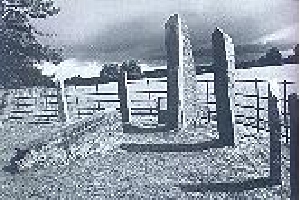
Despite its somewhat prosaic surroundings and the modern iron grating to fend off grazing sheep, this unique and beautifully decorated monolith is one of the great treasures of Celtic La Tene art in Europe. The style of the carving, in its Irish context, is assignable to the last three centuries BC.
The Turoe Stone is a domed granite boulder a little over 3 feet high, artificially shaped and decorated by a technique known as picking, which sets the design out in relief against the background.
The abstract motifs comprise spirals, circles and curves, bounded by a band of simple step pattern carried round the lower part of the stone. The monument was removed to its present site from its place of discovery beside the Rath of Feerwore, an Iron Age ring-fort at Kiltuallagh, a few miles away. Its phallic shape can hardly be accidental and it may well represent a fertility cult.
